#bone marrow transplant for blood cancer
Text
Understanding The Role Of Bone Marrow Transplants For Blood Cancer Patients
Can bone marrow transplants be the life-saving hope for blood cancer patients? If you or a loved one is battling this challenging disease, the answer to this question might hold the key to renewed hope. In this comprehensive guide, we will delve into the world of bone marrow transplants, shedding light on their crucial role in treating blood cancer. What is the science behind these transplants, and how do they offer a potential cure for blood cancer? Join us on this journey as we explore the transformative impact of bone marrow transplants and how they provide hope to those in need.
#bone marrow#blood cancer#bone marrow transplant#bone marrow transplant for cancer#bone marrow transplant for blood cancer#cure of blood cancer#blood cancer treatment#online doctor consultation#online lab test#blood cancer specialist#online doctor#online pharmacy
0 notes
Text

can the bb punnett squares people come back and explain this to me
#this is vee speaking#it just has to be a joke right lmao???? kr saw people speculating how the bb’s blood type works#and then laughed at us because we were taking this too seriously but wanted to fck around some more#and gave rei type a right???? lmao#is ichiro the test tube baby from that theory lol????? bc he and ramuda share the same blood type lol#or did ichiro need a bone marrow transplant???? had a childhood cancer that changed his blood type?????#pls bb punnett squares people come back and explain it to me like i’m four lmao#i wish i had paid more attention to that conversation lol i just want to know if the final consensus was that kr was doing fck all lmao
32 notes
·
View notes
Text
Bone Marrow Transplant (BMT) Treatment: Cost, Procedure, & Hospitals in India
Overview
The bone marrow is a brown, spongy material, found inside the bones, which is responsible for the production of red blood cells, white blood cells, and platelets. Each of these has a specific function, which is vital for our existence. Red blood cells are responsible for carrying oxygen-rich blood to different parts of the body, white blood cells produce antibodies that help us to fight infections and platelets help in clotting, thereby helping to prevent unnecessary blood loss. When your bone marrow is not healthy, it is naturally going to impact the production of the blood cells and platelets, disrupting their normal functioning. In such cases, the patient requires a bone marrow transplant.
What is Bone Marrow Transplant?
Bone Marrow Transplant, commonly referred to as BMT, is a therapeutic intervention that works by replacing the damaged or diseased bone marrow of a patient with healthy stem cells, taken either from the patient's own body or from a suitable donor. Healthy stem cells are infused into the patient's body, to promote the growth and development of new cells.
Different Types of Bone Marrow Transplant
Bone marrow transplant is broadly classified into three different types. These are as under:
Autologous bone marrow transplant - The term 'auto' means self. An autologous transplant involves the infusion of the patient's own stem cells into their body. The procedure is recommended for patients who have to undergo a high dose or intensive treatment like chemotherapy that can destroy the healthy bone marrow. The doctors collect healthy bone marrow from the patient's body prior to the treatment and administer it back into the body after the treatment is finished. The procedure is also referred to as stem cell rescue.
Cost - 11 lakhs to 18.5 lakhs
Steps involved - Various steps involved in autologous bone marrow transplant include:
Collection of the stem cells - This may take several days, and is done by administering medications that increase the stem cell count. The stem cells are then collected and stored at a low temperature.
Treatment - Once the bone marrow has been collected, doctors can proceed with your treatment, be it Chemotherapy or Radiation therapy
Transfusion of stem cells - Once the procedure is complete, the stem cells are reduced in the patient's bloodstream
Allogeneic bone marrow transplant - The term 'allo' means other. Allogenic bone marrow transplant involves the use of tenses taken from a donor, whose genes partially match those of the patients. The eligibility of a person to be a donor is determined by performing a series of tests. Usually, the siblings of the patient are a good match. In some cases, the parents and children may also be suitable donors. Allogeneic bone marrow transplant is classified into three different types - complete matched sibling donor bone marrow transplant, haploidentical bone marrow transplant, and unrelated donor bone marrow transplant.
Cost - 19 lakhs - 28 lakhs
Steps involved - Various steps involved in allogeneic bone marrow transplant include:
Identification of donor - In order to perform an allogeneic bone marrow transplant, there is a need for a compatible donor. The compatibility is defined with the help of a series of tests.
Collection of stem cells - After finding a suitable donor, the stem cells will be collected. This is done by injecting medicines to increase the production of the stem cells and then collecting these from the donor's bloodstream.
Treatment - The free transplant treatment is performed and the patient's body is prepared for the introduction of stem cells.
Introducing the donor cells - The donor cells are transplanted into the patient's bloodstream, which may take about an hour.
Umbilical cord blood transplant
Umbilical cord blood transplant is a type of allogeneic transplant, which involves the administration of stem cells taken from the umbilical cord of a newborn baby, into the patient's body. The cells are collected at the time of birth and stored at a very low temperature, to be used later. The best thing about an umbilical cord blood transplant is that the blood cells are not mature enough, thereby negating the need for a perfect match. The recovery rate is comparatively slower however the procedure can come in handy when the patient cannot find a suitable donor.
2 notes
·
View notes
Text
What is the End Stage of Lymphoma?

End stage lymphoma is the most advanced phase of this type of cancer. In this stage, cancer cells have spread extensively throughout the body, affecting various organs and causing severe symptoms. Treatments focus on relieving symptoms and improving quality of life rather than curing the disease. If you or a loved one is dealing with end stage lymphoma and considering a bone marrow transplant, it's crucial to consult the Best BMT Doctor In Gurugram to explore the best possible care and treatment options.
#best bmt doctor#best blood cancer doctor in delhi#bone marrow transplant specialist in delhi#bmt specialist
0 notes
Text
Empowering Health Choices: Dr. Rahul Bhargava at Fortis Gurugram
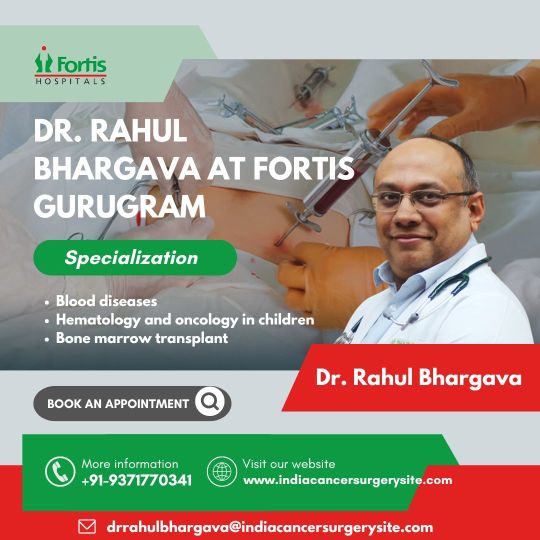
🔵 Dr. Rahul Bhargava Fortis Gurugram 🔵
👨⚕💉💊🩺 Patient can book Dr. Rahul Bhargava appointment India as he acknowledges the outstanding, coordinated cancer care he offers, providing additional access to the latest medical trials and research-based treatments. 👨⚕💉💊🩺
📌 For more information, you can contact us:-
✅Contact:- +91 9371770341
✅Website:- www.indiacancersurgerysite.com
✅Email ID:[email protected]
#Dr. Rahul Bhargava Fortis Gurugram#Dr. Rahul Bhargava Bone Marrow Surgeon Fortis Hospital Gurgaon#Dr. Rahul Bhargava Best Hematologist in Gurugram#Dr. Rahul Bhargava Hematology Specialist#Bone Marrow Transplant Specialist Fortis Hospital Gurugram#Dr. Rahul Bhargav Bone Marrow Transplant Surgeon Gurugram#Dr. Rahul Bhargava Fortis Hospital Appointment#Best Hematologist in Fortis Gurgaon#Top Hemato Oncologist India#Leading Hematologist-Oncologist India#Dr Rahul Bhargava Hematology Oncology Specialist in India#Dr Rahul Bhargava Top Hematology Oncology Hospitals in India#Dr Rahul Bhargava Top Hematologic Oncology Surgeons India#Top Hematologic Oncology Experts Dr Rahul Bhargava#Dr. Rahul Bhargava Affordable Blood Cancer Surgeon
1 note
·
View note
Text

Diagnostic Approaches for Blood Cancer:
Achieving an accurate diagnosis for blood cancer requires a comprehensive strategy, where each component of the diagnostic process holds significant importance. Initial insights are gained through standard blood tests, such as the well-established complete blood count (CBC) and peripheral blood smears. However, the conclusive diagnostic foundations are found in bone marrow aspiration and biopsy, providing crucial information about cellular composition and genetic abnormalities driving the malignancy. Molecular and cytogenetic testing, integral to precision medicine, plays a central role in pinpointing specific mutations, unraveling the complex genetic landscape, and aiding in the development of targeted therapeutic plans.
Treatment Modalities:
The dynamic realm of blood cancer treatment encompasses a range of approaches, often intertwined to maximize effectiveness.
1. Chemotherapy: Serving as the stalwart in blood cancer treatment, chemotherapy employs a diverse array of drugs to manage or eradicate cancer cells. Its systemic impact addresses both localized and widespread diseases, navigating the intricate landscape of hematologic malignancies.
2. Radiation Therapy: Utilizing high-energy rays with precision, radiation therapy contributes to the targeted destruction of cancer cells. This modality is applied in localized disease and plays a crucial role in preparative regimens for stem cell transplantation.
3. Immunotherapy: Representing a revolutionary shift in treatment, immunotherapy utilizes the body's immune system to identify and eliminate cancer cells. Monoclonal antibodies, checkpoint inhibitors, and adoptive cell therapies exemplify the diverse strategies employed to enhance the immune response against blood cancers.
4. Stem Cell Transplantation: Emerging as a potentially curative option for specific blood cancers, stem cell transplantation involves the meticulous replacement of diseased bone marrow with healthy stem cells. The choice between allogeneic and autologous stem cell transplants comes with distinct advantages and risks, with considerations such as age, overall health, and disease status guiding therapeutic decision-making.
There are many good hospitals in Mumbai that offer health checkup packages for a full body health checkup. Regular health checkups can help in the diagnosis and treatment of medical conditions like blood cancer at an early stage before the condition becomes fatal.
#full body health checkup#regular health checkups#health checkup packages#blood cancer#chemotherapy#radiation therapy#immunotherapy#stem cell transplant#bone marrow transplant#blood tests
0 notes
Text
How to begin to apply to receive treatment for you health issue with us?
Our guide services begin from geting information about personal information for the applicant. Then we most get knowledge about the disease history and current symptoms. As well as, should the patient or the responsible for the patient legally to send to us the medical files that clearly understood by email. We will open the files and study them cooperating with doctors and in the final take the decision about accept the patient in our hospital and send the invitation. Before the applicant arrive to the hospital all the appointments will organise to the patient. When they arrive to the hospital and the process began, they will take support with sufficient assistance and translators who will assist them in the all matters in the hospital. To contact with us to get more information click
#healthcare#cancer#hospital#clinic#medicaltourism#health#generalsurgery#orthopaedics#physicaltherapy#organ transplant#bone marrow#bone marrow transplant#blood diseases#immunesystem#osteoporosis#cataract#metabolism#gastric sleeve#diabetes#plasticsurgery#ivf clinic#ivfjourney#brain tumor#brain surgery#mri scan#Tumor resection#immune therapy#lung cancer#kidney failure#kidney transplant
0 notes
Text
A bone marrow transplant (BMT), also known as a stem cell transplant, can be an effective treatment option for certain types of blood cancer, particularly leukaemia, lymphoma, and multiple myeloma, as well as some non-cancerous blood disorders.
The effectiveness of a BMT depends on several factors, including the type and stage of the blood cancer, the patient's overall health, and the source of the donor cells.
Here are some key points regarding the effectiveness of bone marrow transplants for treating blood cancer:
Curative Potential: BMT is considered a potentially curative treatment for certain blood cancers, particularly when other treatments have not been successful or when the cancer is at an advanced stage. It aims to replace the patient's diseased or damaged bone marrow with healthy donor stem cells, allowing the production of normal blood cells.
Allogeneic vs. Autologous Transplants: There are two main types of BMTs: allogeneic and autologous. In an allogeneic transplant, donor stem cells are obtained from a compatible donor (usually a sibling or unrelated donor) and are used to replace the patient's marrow. In autologous transplants, the patient's own stem cells are collected and then infused back after high-dose chemotherapy. Allogeneic transplants have a higher potential for cure because they introduce an immune response against cancer cells.
Disease-Specific Efficacy: The effectiveness of a BMT varies depending on the type of blood cancer. For example, allogeneic BMT can be highly effective in treating acute leukemias, while autologous BMT is often used in multiple myeloma and some lymphomas. The success rates and risks associated with each type of transplant can differ.
Risk Factors: BMT is associated with significant risks and potential complications, including graft-versus-host disease (in allogeneic transplants), infections, organ damage, and graft failure. The patient's age, overall health, and the presence of comorbidities can affect the risk profile.
Matching Donors: In allogeneic transplants, finding a suitable donor with compatible human leukocyte antigen (HLA) markers is crucial. The closer the HLA match between donor and recipient, the better the chances of a successful transplant.
Ongoing Monitoring: After a BMT, patients require close monitoring for complications, graft-versus-host disease (in allogeneic transplants), and recurrence of the blood cancer. Long-term follow-up care is essential to ensure the best outcomes.
Individualized Approach: The decision to pursue a bone marrow transplant should be individualized and made in consultation with a hematologist or oncologist. They will consider the patient's specific case, including their diagnosis, overall health, and the availability of suitable donors.
In summary, bone marrow transplants can be highly effective for treating certain blood cancers, offering a potential cure for some patients. However, the decision to undergo a BMT is complex and depends on various factors. Patients and their healthcare teams should thoroughly discuss the risks, benefits, and suitability of BMT as part of the overall treatment plan.
There are best hospitals in Delhi and India, where lymphoma is treated successfully. You may contact these hospitals for knowing more about lymphoma symptoms, lymphoma treatments, success of various treatments like bone marrow transplant, cost of lymphoma treatments, cost of bone marrow treatment in Delhi.
Here are some common treatments for blood cancer:
Chemotherapy: Chemotherapy uses drugs to kill cancer cells or stop their growth. It can be administered orally, intravenously, or via other methods, and it's often used as a primary treatment for various blood cancers.
Radiation Therapy: Radiation therapy uses high-energy X-rays or other types of radiation to target and destroy cancer cells. It is often used in conjunction with chemotherapy or as a localized treatment for specific types of blood cancers.
Stem Cell Transplantation: Stem cell transplantation, also known as bone marrow transplantation, involves replacing damaged or cancerous bone marrow with healthy stem cells. It's used to treat diseases like leukemia, lymphoma, and multiple myeloma.
Targeted Therapy: Targeted therapies are drugs that specifically target cancer cells or the processes that drive their growth. These drugs have fewer side effects than chemotherapy and can be highly effective for certain types of blood cancer.
Immunotherapy: Immunotherapy drugs help the immune system recognize and attack cancer cells. CAR-T cell therapy, for example, is a form of immunotherapy used for certain types of blood cancer, especially some types of leukemia and lymphoma.
Biological Therapy: Biological therapies use substances made from living organisms to treat cancer. For example, monoclonal antibodies can be used to target specific proteins on the surface of cancer cells.
Watchful Waiting: In some cases, especially for slow-growing blood cancers, doctors may adopt a "watchful waiting" approach, where they monitor the condition closely and initiate treatment only when necessary.
Supportive Care: Managing symptoms and side effects is an essential part of blood cancer treatment. Supportive care may include pain management, blood transfusions, antibiotics, and other measures to improve the patient's quality of life.
Clinical Trials: Participating in clinical trials can provide access to experimental treatments and therapies that are not yet widely available. Discuss with your healthcare team whether there are suitable clinical trials for your specific blood cancer.
The choice of treatment depends on factors such as the type and stage of the blood cancer, the patient's overall health and preferences, and the potential risks and benefits of each treatment option. Treatment plans are typically developed by a team of healthcare professionals, including haematologists, oncologists, and other specialists, to provide the most appropriate and effective care for the individual patient.
#bone marrow#bone marrow transplant#transplant#cancer#bloodcancer#blood cancer#lymphoma#leukemia#best hospital in delhi#health
0 notes
Text

The different types of bone marrow transplants are:
Autologous bone marrow transplant: The procedure involves replacing the patient’s diseased stem cells with the healthy stem cells obtained from the patient himself or herself. The average cost of an autologous bone marrow transplant in India is between INR 8,00,000 to INR 10,00,000.
Allogeneic bone marrow transplant: The procedure involves replacing the patient’s diseased stem cells with the healthy stem cells obtained from a donor. The average cost of an allogeneic bone marrow transplant in India is between INR 12,00,000 to 15,00,000.
There are many hospitals in cities like Bangalore where bone marrow transplant is done with success.
0 notes
Link
0 notes
Text
Updates that no one asked for....
This first one is not meant to be a self brag, but bear with me. I donate whole blood on a regular basis. This week for the first time I donated platelets instead of whole blood. I did this because I learned that cancer patients benefit primarily and almost immediately from such donations. I am sure you can all imagine what motivated me to make this choice. I hope our Catherine is getting stronger by the day.
The second one is that; I read a book and it changed me.
Anyway, I hope everyone is well. There is a great big eclipse on Monday, I will see everyone on the other side of it 🤍
94 notes
·
View notes
Text
"The “Düsseldorf Patient”, a man now aged 53, is just the third person worldwide to have been completely cured of HIV via stem cell transplantation.
As in the case of the other two patients, the so-called “Berlin Patient” and “London Patient,” the transplantation was undertaken to treat an acute blood disease, which had developed in addition to the HIV infection.
The Düsseldorf Patient received a stem cell transplant used to treat leukemia in 2013 and has shown persistent suppression of HIV-1 ever since, including during the last 4 years after the patient stopped taking anti-retroviral medication.
“I still remember very well the sentence from my family doctor: ‘don’t take it so hard,'” the Düsseldorf Patient, who had leukemia as well as HIV-1, said in a statement. “‘We will experience together that HIV can be cured!’ At the time, I dismissed the statement.”
Allogeneic hematopoietic stem cell transplantation (HSCT) is a procedure used to treat certain cancers, such as leukemia, by transferring immature blood cells from a donor to repopulate the bone marrow of the recipient.
Scientists now understand that individuals with two copies of the Δ32 mutation in the gene for the HIV-1 co-receptor CCR5; are resistant to HIV-1 infection. The two previous cases of both the London patient and the Berlin patient involved receiving a stem cell transplant from a donor with these unique mutations.
Björn-Erik Jensen, a specialist in infectious diseases at Düsseldorf University Hospital, lead the treatment and subsequent research, revealed today in a peer-reviewed study in Nature.
The patient was diagnosed as having acute myeloid leukemia and proceeded to undergo transplantation of stem cells from a female donor in 2013, followed by chemotherapy and infusions of donor lymphocytes.
After the transplantation, anti-retroviral therapy was continued, but HIV was undetectable in the patient’s blood cells. Anti-retroviral therapy was suspended in November 2018 with the patient’s informed consent, almost 6 years after the stem cell transplantation, to determine whether the virus persisted in the patient.
“I very much hope that these doctors will now get even more attention for their work,” said the patient. “I have now decided to give up some of my private life to support research fundraising. And of course, it will also stay very important for me to fight the stigmatization of HIV with my story.”
The authors conclude that although HSCT remains a high-risk procedure that is at present an option only for some people living with both HIV-1 and hematological cancers, these results may inform future strategies for achieving long-term remission of HIV-1."
-via Good News Network, 2/20/23
VERIFIED 10 YEARS ON, PROOF THAT HIV IS CURABLE
#hiv#health care#hiv aids#aids epidemic#aids crisis#lgbtq#lgbtq history#queer#queer history#hiv treatment#sex ed#medical news#medical research#good news#hope#I know he's not the first person we found cured of hiv#but as they say#three is a pattern#ANY increase in sample size at this stage is absolutely historical
397 notes
·
View notes
Text
The Best News of Last Week #049
1. First 100,000 KG Removed From the Great Pacific Garbage Patch

The Ocean Cleanup has been working on ridding the world of the GPGP since 2013. Its founder and CEO, Boyan Slat, said the company’s current cleanup platform, System 002, had collected 101,353kg of plastic since being deployed in August 2021. The cleanups swept a 3,000 square kilometer area of the Pacific, roughly equivalent to the size of Rhode Island or Luxembourg.
2. There are 40% more tigers in the world than previously estimated

It’s the Year of the Tiger, and a new population assessment offers some hope for the endangered species.
An estimated 3,726 to 5,578 tigers currently live in the wild worldwide — up 40% from 2015, according to a new tiger assessment from the International Union for Conservation of Nature (IUCN). Tigers are still considered endangered and remain on the IUCN’s Red List, which assesses endangered species.
3. Fourth patient seemingly cured of HIV
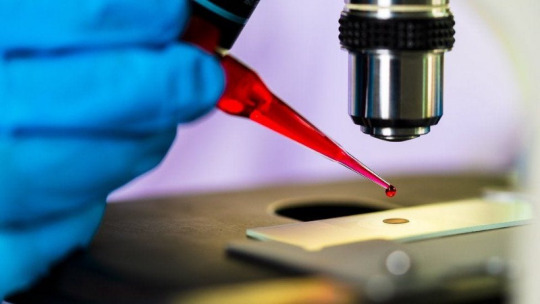
A man who has lived with HIV since the 1980s seems to have been cured in only the fourth such case, say doctors. He was given a bone marrow transplant to treat blood cancer leukaemia from a donor who was naturally resistant to the virus.
The 66-year-old, has stopped taking HIV medication. He said he was “beyond grateful” the virus could no longer be found in his body. The man is known as the “City of Hope” patient after the hospital where he was treated in Duarte, California.
4. Pennsylvania nurses receiving student debt cancellation

Nurses across Pennsylvania will begin receiving notifications next week about whether they are eligible for a share of the $55 million the state is making available to lower or erase their student loan debt.
The money for Pa. Student Loan Relief for Nurses Program comes out of state’s share of federal American Rescue Plan funds. This one-time offer will relieve selected state-licensed nurses who cared for patients during the COVID-19 pandemic at a Pennsylvania health care facility of up to $7,500 of student loan debt.
5. This beautiful blue parrot has returned to the wild 2 years after being declared extinct

After teetering on the edge of extinction, the beautiful Spix’s macaw has made its return to the wild, over two decades after the last bird was seen in nature. Eight of the bright blue parrots have been released into a protected nature reserve in Brazil.
“They’re doing absolutely wonderful. So far there is 100 per cent survival. The birds are all staying together as a group… They’re staying in around the release area. And they’re also beginning to forage on natural occurring foods,” biologist Tom White told The Current guest host Duncan McCue.
6. New research shows that signs of Alzheimer’s can be found in blood 17 years before symptoms begin.
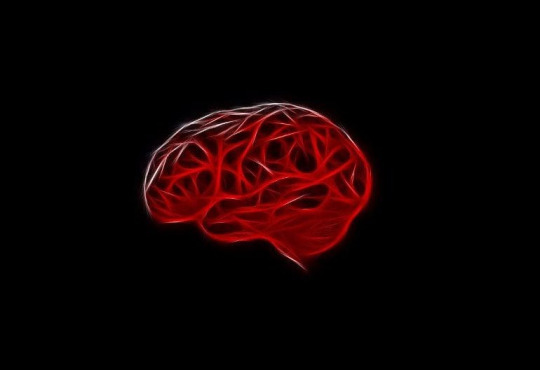
A newly developed immuno-infrared sensor allowed researchers to discover biomarkers for Alzheimer’s disease in blood samples 17 years before clinical symptoms appeared.
The goal is to determine the risk of developing Alzheimer’s dementia at a later stage with a simple blood test even before the toxic plaques can form in the brain, in order to ensure that a therapy can be initiated in time.
7. Drone lifeguard saves boy, 14, from drowning in sea in Valencia in Spain
youtube
A pioneering drone lifeguard has saved a 14-year-old boy from drowning in the sea in Valencia in Spain.
The drone lifeguard service, which has been rolled out across Spanish beaches, dropped a life vest into the sea this month that was able to keep the teenager afloat just as he started to sink, its operators have said. The vest kept the boy afloat until a physical lifeguard team arrived moments later.
...
That’s it for this week. This newsletter will always be free. If you liked this post you can support me with a small kofi donation:
Buy me a coffee ❤️
574 notes
·
View notes
Text
Understanding Acute Lymphoblastic Leukemia: A Patient's Guide
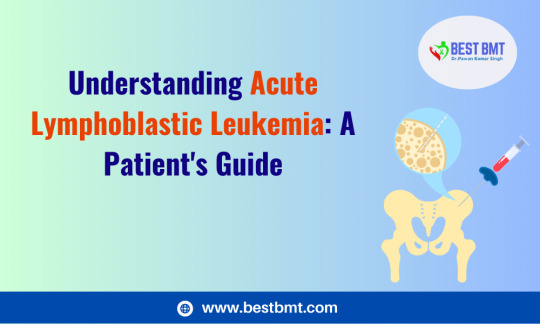
Understand Acute Lymphoblastic Leukemia (ALL), a type of blood cancer. It explains what ALL is, the symptoms to watch for, and the basics of diagnosis and treatment. Learn how to manage life with ALL and where to find the best care.
For those in need of specialized treatment, the guide highlights the importance of consulting the Best BMT Doctor in Gurugram for expert care and support.
0 notes
Text
Bringing Hope to Gurgaon: Dr. Rahul Bhargava's Healing Touch at Fortis Hospital
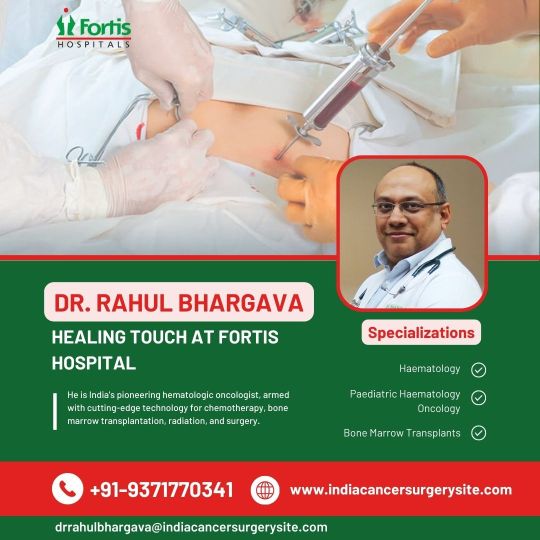
🔵 Dr. Rahul Bhargava bone marrow surgeon Fortis hospital Gurgaon🔵
👨⚕💉💊🩺 Equipped with advanced technology for chemotherapy, bone marrow transplantation, radiation, and surgery, he stands as the first hematologic oncologist in India to offer minimally invasive robotic cancer surgery. 🩺💉💊👨⚕
📌To make an appointment, you can contact us:-
✅Contact:- +91 9371770341
✅Website:- www.indiacancersurgerysite.com
✅Email ID:[email protected]
#Dr. Rahul Bhargava Fortis Gurugram#Dr. Rahul Bhargava Bone Marrow Surgeon Fortis Hospital Gurgaon#Dr. Rahul Bhargava Best Hematologist in Gurugram#Bone Marrow Transplant Specialist Fortis Hospital Gurugram#Best Hematologist in Fortis Gurgaon#Dr. Rahul Bhargava Fortis Hospital Appointment#Top Hemato Oncologist India#Leading Hematologist-Oncologist India#Dr Rahul Bhargava Hematology Oncology Specialist in India#Best Hematologist for Blood Cancer Treatment in India#Expert Hematology Oncology Physicians India#Dr Rahul Bhargava Top Hematologic Oncology Surgeons India#Hematology Cancer Specialists dr rahul bhargava#Best Blood Cancer Doctors in India#Dr. Rahul Bhargava Affordable Blood Cancer Surgeon
1 note
·
View note
Text

The selection of treatment for leukemia is influenced by various factors, including the specific type of leukemia, the patient's age, overall health, and genetic factors. Here are some of the primary therapeutic strategies:
Chemotherapy: Chemotherapy is a frequently employed approach for leukemia treatment. It entails the use of medications to either eliminate blood cancer cells or impede their growth. Chemotherapy can be administered orally, intravenously, or via injections and is often combined with other treatments like radiation therapy or stem cell transplantation. The chemotherapy regimens vary based on the type and stage of leukemia. For instance, aggressive chemotherapy may be necessary for inducing remission in cases of ALL or AML. Patients typically undergo multiple cycles of chemotherapy with breaks in between to allow their bodies to recover from side effects.
Radiation Therapy: Radiation therapy employs high-energy X-rays or other radiation forms to target and destroy cancer cells. It is especially effective in treating leukemia that has spread to specific body areas, such as the central nervous system. Often, radiation therapy is used alongside chemotherapy. Radiation therapy is tailored to each patient's individual requirements and can be administered externally through machines directing radiation beams at the affected area or internally via the placement of radioactive materials near leukemia cells.
Targeted Therapy: Targeted therapy is a more recent advancement in leukemia treatment and involves drugs designed to specifically disrupt mechanisms enabling leukemia cell growth and division. These drugs have shown promise in treating specific leukemia types, like chronic myeloid leukemia (CML). Targeted therapy drugs, such as Imatinib for CML, work by inhibiting specific proteins responsible for leukemia cell growth. They are often utilized as long-term treatments, helping patients achieve and maintain remission with fewer side effects compared to traditional chemotherapy.
Stem Cell Transplantation: Stem cell transplantation, also known as bone marrow transplantation, is a procedure where healthy stem cells are transplanted into the patient's body to replace damaged or cancerous cells. This bone marrow transplant treatment is often employed in cases of acute leukemia when other treatments have proven ineffective. Stem cell transplantation can be autologous, using the patient's own stem cells, or allogeneic, involving stem cells from a compatible donor. Allogeneic bone marrow transplants require close donor-recipient matching and are associated with a higher risk of complications but offer a potential cure for specific leukemia types.
Immunotherapy: Immunotherapy is an emerging approach that harnesses the body's immune system to target and eliminate cancer cells. CAR-T cell therapy, a form of immunotherapy, has shown significant promise in treating specific leukemia types, particularly acute lymphoblastic leukemia (ALL). CAR-T cell therapy entails genetically modifying a patient's T cells to recognize and attack leukemia cells. These modified T cells are reintroduced into the patient's body, where they locate and destroy cancer cells. While CAR-T therapy has exhibited remarkable success, it can also lead to severe side effects, including cytokine release syndrome, necessitating careful monitoring and management.
Supportive Care: Effectively managing the side effects and complications of leukemia and its treatments is crucial. Supportive care may involve blood transfusions to address anemia and low platelet counts, antibiotics to prevent infections, and medications to alleviate pain and discomfort.
Patients undergoing leukemia treatment or treatment of other blood disorders, like myeloma or lymphoma, typically require a multidisciplinary approach involving oncologists, hematologists, nurses, and other healthcare professionals. Regular monitoring and adjustments to treatment plans are common practices to ensure the best possible outcomes. You can find some of the best medical specialists and healthcare team in reputed hospitals situated at Delhi.
The cost of leukemia treatment will vary depending on the type of treatment being performed. The cost of bone marrow transplant in Delhi typically varies between INR 8,00,000 to INR 15,00,000.
0 notes